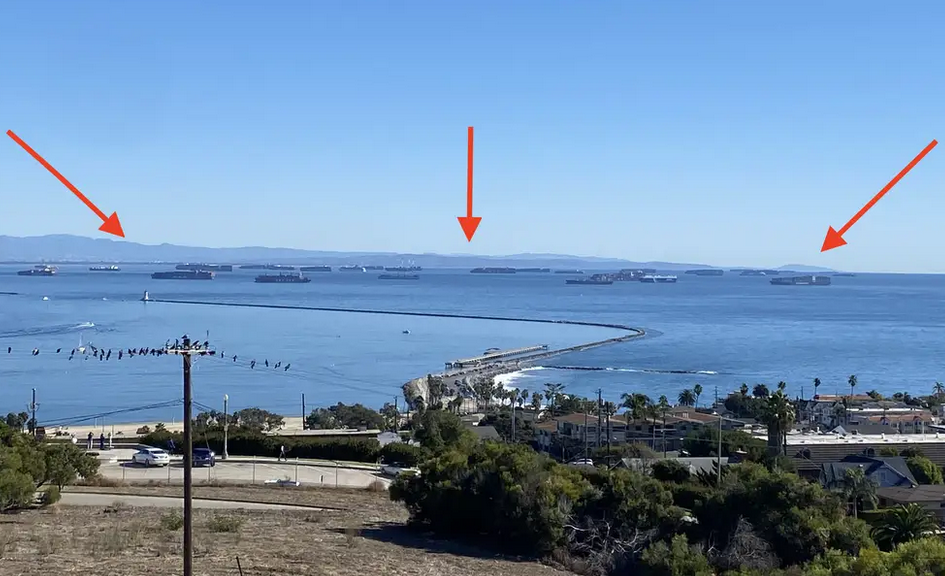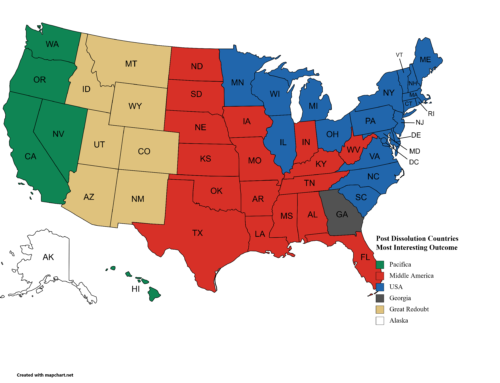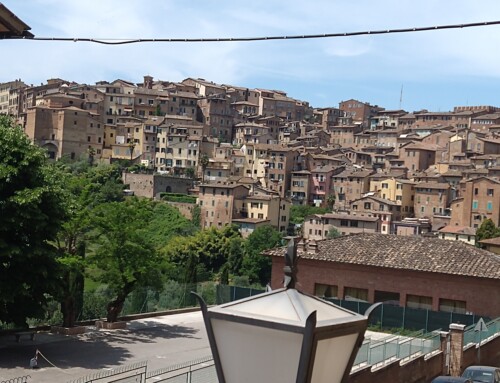The promises of the information revolution and Third Wave of society ushered in an era of competition and lower prices on an entire range of goods by globalizing the manufacture of products and the democratization of services. This revolution enabled people around the world to participate in the global chain of service and supply. By globalizing production and services, prices fell in the West while standards of living improved dramatically across the globe.
US companies took a leap on Chinese manufacturers and the massive increase in global shipping to move suppliers from US companies to Chinese, which offered prices low enough to save US businesses money even after factoring in the price of shipping. European manufacturers took advantage of the same economies of scale by building factories in non-EU countries such as Serbia where wiring harnesses for auto manufacturers could save them millions over factories in Germany or France. Anyone in the US who has called their cellular service provider and spoken to “Doug” or “Molly” in Manila to resolve an issue knows that what matters to them is resolution of their issue, not what country that person is sitting in when taking your call.
Today, that system of global production and service is at a breaking point, and countries as well as businesses are re-evaluating the necessary consequences that were foreseeable, but not foreseen, when the push for global integration was pushed in the 1990s.
Economies of scale and the information revolution made it possible to gain efficiencies such as eliminating inventories in favor of just-in-time logistics. The cost of maintaining inventory warehouses became unjustifiable when replacements parts could be predictably and confidently obtained in a global supply chain in nearly the same time as from a company’s inventory.
There was a time when a person, not seeing the item they were looking for on a shelf, would ask a sales associate if they could check in the back to see if there was any more. Today there is no such thing as “in the back.” Humans are no longer even involved in inventory. Your grocery has developed or purchased software that automatically requests replacements for the goods sold each day to maintain a specific level of availability which is different for every item and is based on the amount sold each day. Such efficiency is a marvel of economics and the dream of only the most visionary economists 50 years ago.
But it is also a precarious place to be. A very natural but unexpected disruption in one place on the globe can have massive cascading effects all around the world. One ship which closes the Suez Canal has effects on global supplies weeks later because the ships that are stuck waiting for transit cannot arrive at their ports as scheduled to offload their cargoes. Goods which are awaiting loading onto those very ships for their next destination cannot be loaded and will, at best, be delayed in their arrivals, if not canceled outright. Shipping containers, so ubiquitous and inexpensive that people build cabins and homes out of them, are now in such short supply that the entire industry is in crisis. When ships arrive at port, there is such a backlog of waiting ships that they have to wait many days just for a spot in port and then there aren’t enough port workers to offload them quickly.
Today, anyone trying to buy a used car is amazed that not only are few available, but those that are cannot be bought at “used car price” because the shortage has inflated prices to new car levels. Why? Partly because of the global shipping slowdown, but mostly because of the shortage of microchips that now run most systems in a new vehicle, which in turn was caused by the Covid pandemic. So if a government wanted to remedy this situation by incentivizing chip makers to open new factories here in the US, the cost would be very high and the time it takes to build a factory would be so long that it couldn’t lessen the severity of the current situation.
Likewise the shortage of lumber is driving up the cost of building homes just as the highest demand in years presents itself. The system of growing trees for lumber is a long-term system without fidelity to respond rapidly to increased demand. Investment in capacity must be based on expected increases in demand.
All these supply shortages are completely foreseeable in the times when the decisions are made that set levels of availability and time to market. A fully efficient system produces commodities based on exact expected demand, no more, no less. Risk is accepted when investment in future capabilities is put off or deprioritized and a drop or surge in demand arises out of natural patterns of life such as pandemics.
Analysts cannot predict when a pandemic will arise, only that one will. Businesses who see money saved as money earned will seek out maximum efficiencies while accepting the risk that their predictions might be disrupted by natural fluctuations in that system. So when the pandemic hit and made working in crews untenable, builders ceased ordering building materials from their wholesalers. Those in turn canceled orders. Timer companies ceased cutting and milling wood both because their workers were quarantining and because near zero demand dictated a slowdown. But when the pandemic ended, it should not have surprised anyone that prices would soar as a sudden demand for materials could only be filled at the pace the fastest timber company could cut and mill and ship their wood. Even then, the available supply of shippers – trucks, trains, barges, ships – were having to juggle requests from multiple types of suppliers to move their goods in limited containers and truck beds.
So if you are a company leader on the manufacture end of this chain, you are in a position now to reap the accidental rewards of a high demand period to offset your losses that you swallowed during the shutdown. If you are near the final sale end of this chain, you will incur or pass on the higher costs of this demand to your customers. If you are planning to build a home this summer, your choices are to pay higher material prices or put off building until the unknown date at which prices return to some lower equilibrium. If you are planning to build in the future, you might do some analysis of the trade-off between buying the materials early when perhaps they are less expensive and paying to store them somewhere, or maybe gamble that a future increase won’t affect you.
The real lesson in this current situation we find ourselves in is that the system that is designed to keep your inventory costs low is the very system that can ruin you if supply is delayed, in the best case, or ceased, in the worst case. If you see your business rival stocking up on certain supplies, like microchips, in times of plenty, you might think him or her a chump since you’re saving money by only getting exactly what you need when you need it for that day’s production. But if your rival chump continues to produce when you’re stopped because your just-in-time supply chain is disrupted, then suddenly he’s brilliant and you look like the chump.
In a previous article, we advocated for CEOs to hire a chief analyst. Now, your chief analyst may not be the decision maker that determines requirements for your production. However that person would definitely inform your decisions about risk and allow you to make an informed decision about how much risk is acceptable. Texas just made a decision to fund $1 billion for border security while mandating in law that power companies “winterize” power grid infrastructure on their own dime after a near collapse of the Texas power grid this past winter. The governor believes this to be a prudent decision. And until the next power crisis it might be. But at that point it will be impossible to sprinkle pixie dust on the grid and make it work better than in the past.
There is an old saying heard in military planning circles: The perfect is the enemy of the good. In our present business and manufacturing world, the perfect system designed to save everyone money at every stage in every process showed that any disruption, from a ship stuck in a canal to a pandemic, could stop the entire system and not even come close to being simply good.
If you want to survive the coming downturn in your lane, you might build some silos and put aside some grain for the eventual year of drought. After the disruptions of the last year, your investors will understand and respect your decision to do so.






Leave A Comment